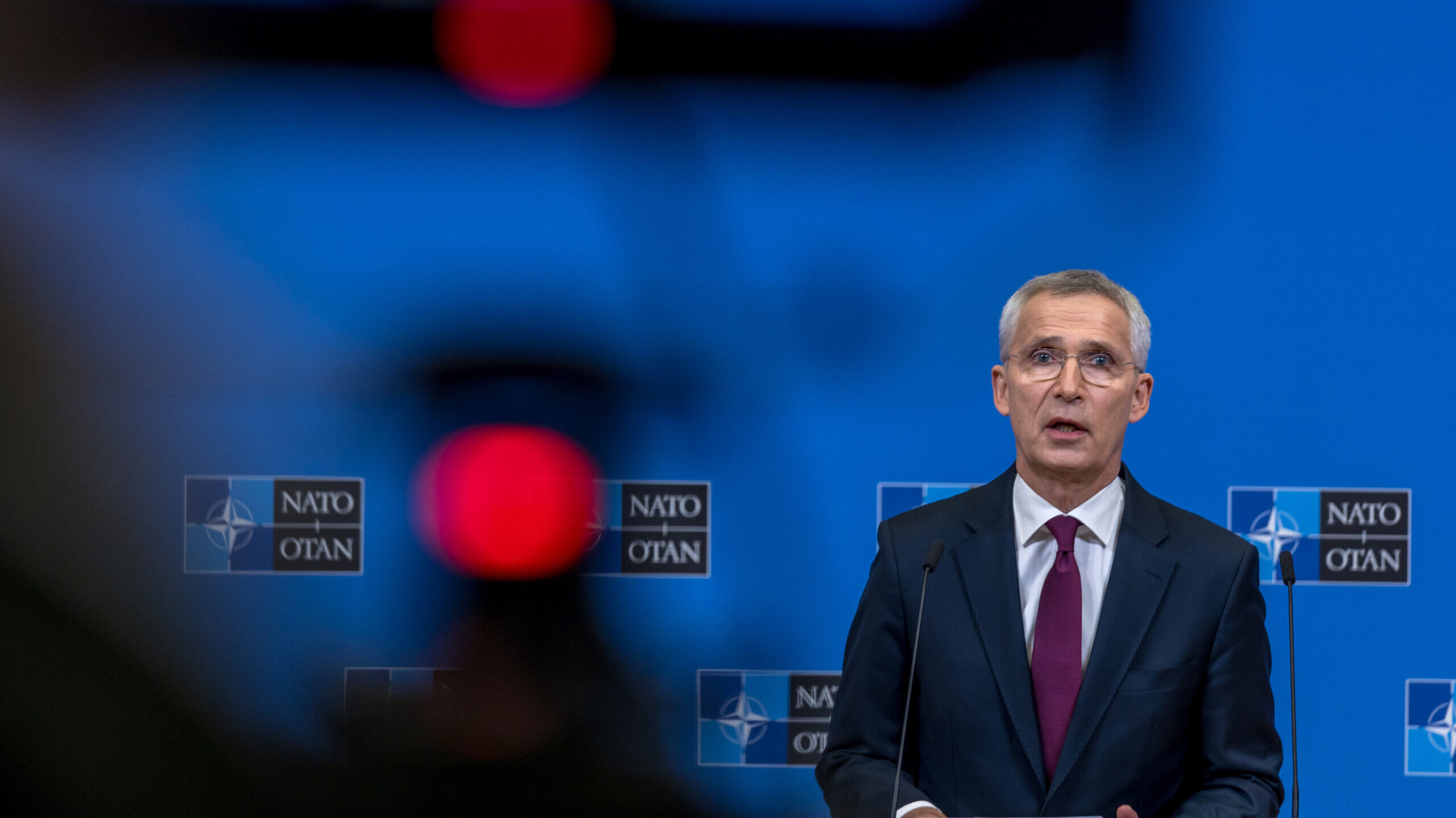
NATO Secretary General Jens Stoltenberg holds a closing press conference during the second of two days of defence ministers’ meetings at NATO headquarters on June 16, 2023 in Brussels, Belgium. (Photo by Omar Havana/Getty Images)
BELFAST — The NATO alliance is nearing the establishment of a NATO-Ukraine Council in which all members can directly engage and consult with the embattled Eastern European country on “security issues of mutual concern” — potentially as a precursor to future alliance membership.
NATO Secretary General Jens Stoltenberg announced the new effort at the two-day defense ministers summit in Brussels, Belgium, today and said that it would bring Ukraine “politically closer” to the alliance.
“This will be a body of 31 Allies and Ukraine [as] equal[s], sitting around the table with the same rights and the same possibilities to consult, and also make decisions together if we find that the right thing to do,” Stoltenberg said.
A first meeting of the Council, which will include Ukraine President Volodymyr Zelenskyy, is expected to be held at the NATO Heads of State Summit in Vilnius, Lithuania, next month.
And while Stoltenberg explicitly ruled out Ukraine being offered an invitation to join NATO at the forthcoming summit, he gave a strong indication that membership could still become a reality.
“We all agree that Ukraine has already moved closer to NATO over the past decade,” he said. “We agree that NATO’s door is open. That Ukraine will become a member of the Alliance. And that it is a decision for allies and Ukraine to make. Russia does not have a veto.”
The lack of any timeline for Ukraine to join the alliance and the obvious implications the move would have in triggering the Article 5 collective defense clause seem to suggest membership will only be offered when the war with Russia is over. (Zelensky said last September Ukraine had formally applied for membership.)
“We do not know when this war ends,” added Stoltenberg. “But when it does, we need to put in place a framework that ensures Ukraine’s future security and make sure that history does not repeat itself.”
One solution that has been discussed centers around the idea of Ukraine receiving “near automatic membership” once an invitation has been issued, according to the British Guardian newspaper. It added that, similar to Finland and Sweden’s application process, Ukraine would not be subject to meeting membership application plan (MAP) conditions. Stoltenberg, however, did not discuss any accelerated membership scenario.
“All allies agree that Ukraine will become a member of NATO,” he explained. “We’re not going to discuss an invitation at the Vilnius Summit, but how we can move Ukraine closer to NATO, and I’m confident that we will find a good solution and consensus.”
In response to Russia’s recent announcement that it will deploy tactical nuclear weapons to Belarus, Stoltenberg said that NATO had not seen any change in Moscow’s “nuclear posture” but continues to “constantly” assess the issue. NATO’s Nuclear Planning Group discussed the matter at the defense ministers summit.
Those gathered also reviewed the alliance’s Defence Production Action Plan designed to boost defense materiel production, including “concrete measures [taken] to aggregate demand, boost capacity, and increase interoperability and interchangeability,” according to Stoltenberg.
Demand by European and US militaries for defense equipment to both send to Ukraine and to purchase in order to replenish stocks have caused considerable supply chain issues for industry, amid warnings that some weapons components have become unavailable for months at a time.
Australia tops up Ukraine military aid with $100M
Australia has already supplied Ukraine with 120 Bushmaster vehicles, six 155mm howitzers, 56 M113 armored vehicles, 14 special operations vehicles and its signature cardboard drones.


























